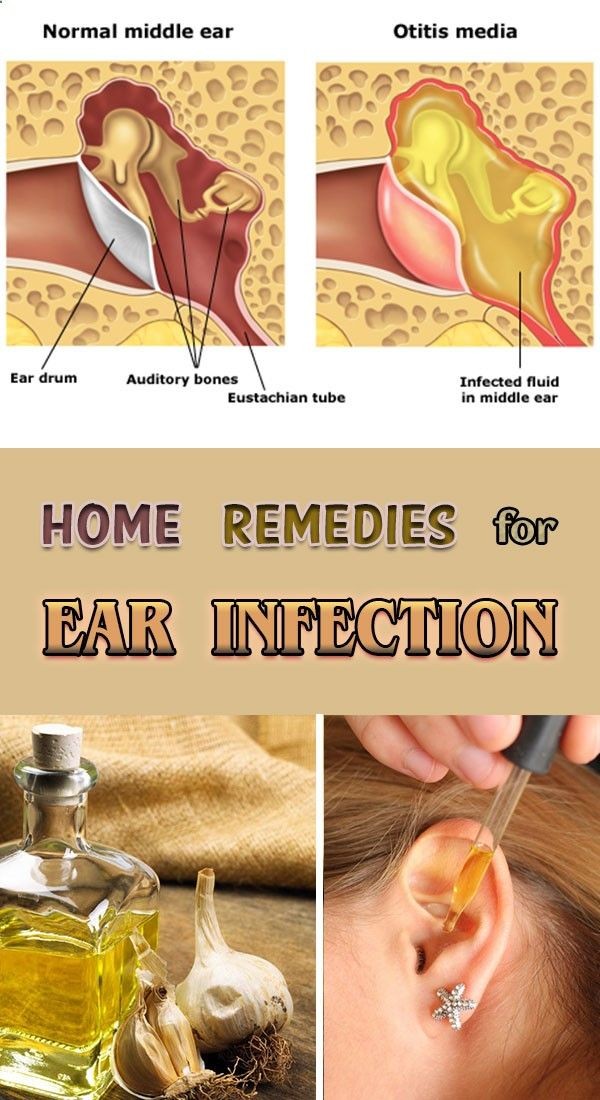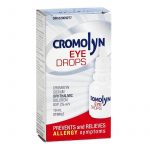
Contents
Ear Infection Home Treatment
Ear infections can be caused by viruses, bacteria, or rarely yeast.
There are three areas in the ear where ear infections can occur in adults and children.
- Outer ear infections (swimmer’s ear): An outer ear infection (otitis externa) commonly known as "swimmer’s ear." This infection is due to bacterial infection of the skin tissue covering the ear canal. Excessive immersion in water or injuring the ear canal makes you more likely to develop an outer ear infection.
- Middle ear infections: A middle ear infection (otitis media) is an infection just behind the eardrum (tympanic membrane) with pus trapped in the adjacent hollow cavity (middle ear space) of the facial bone. Middle ear infections are a complication of the common cold in children. Most middle ear infections are caused by viruses and will resolve on their own. Some bacterial infections require antibiotic treatment.
- Inner ear infections: Inner ear infections are rare and usually caused by a virus. These infections are characterized by the inflammation of the structures of the inner ear (labyrinthitis). Symptoms include ringing of the ears (tinnitus) or dizziness and balance disruption (vertigo). Inner ear infections in adults and children usually require medical treatment.
Which parts of the ear can become infected?
There are three separate elements of the human ear that work together to enable hearing and balance.
- The outer ear includes the cartilaginous structure (pinna) and ear canal ending at the eardrum (tympanic membrane).
- The middle ear consists of the eardrum and a small hollow area of the facial bone adjacent to the eardrum, in which three small bones are linked together. The eardrum moves as a result of air pressure waves that are focused by the pinna and travel down the ear canal. This movement transfers the stimulus to the inner ear.
- The inner ear consists of two structures: the cochlea, which converts movements of the ear bones into nerve impulses that are sent to the brain, and the semicircular canals, which interpret the motion of the head allowing recognition of body position in space.
What are the symptoms of an ear infection?
The anatomy of the ear. The "760" notes atmospheric pressure in the middle ear. The eustachian tube supplies air to the middle ear.
Common outer (swimmer’s ear) and middle ear infection symptoms
- Ear pain
- Hearing problems
- Redness and inflammation
- Pus draining from the ear
- Itching
Middle and inner ear infection symptoms
- Fever
- Balance problems
- Feeling of fullness in the ear
Additional inner ear infection symptoms
- Nausea and vomiting
- Vertigo
- Tinnitus
- Labyrinthitis
QUESTION
Can I treat an ear infection at home?
You can treat some outer and middle ear infections at home with remedies and over-the-counter medication for pain and inflammation.
Swimmer’s ear (outer ear infection) home treatment
Prolonged and recurrent immersion in water causes outer ear infections. The primary treatment for swimmer’s ear is to avoid water in the ear canal until the pain is gone.
An outer ear infection may take several days to heal, but the pain usually goes away within one week. The warmer the water, the higher the likelihood of getting a swimmer’s ear.
Acetic acid drops may be used for mild cases of an outer ear infection if you do not have a history of tubes in your ears or eardrum rupture (perforation).
Middle ear infection home treatment
Virus causes middle ear infections. Pain management for two or three days will allow the body’s immune system to fight and cure the infection, similar to the common cold. Some people may need medical treatment for middle ear infections.
Inner ear infection and labyrinthitis home treatment
Inner ear infections are rare and the symptoms may be associated with other non-infectious causes. These infections should not be treated at home. Inner ear infections usually require treatment by an Ear, Nose, and Throat specialist.
What home remedies relieve ear pain and cure ear infections?
Natural and over-the-counter remedies for ear infections include:
- Over-the-counter pain relievers like acetaminophen, ibuprofen, and naproxen.
- Warm (not hot) oil dripped gently into the ear canal for middle ear infection pain without eardrum perforation.
- Warm or cold compresses.
- Naturopathic eardrops and tea tree oil eardrops (not FDA-approved).
- Ginger oil applied to the pinna.
- Sleeping with the painful side "up" to manage ear pain.
- Chiropractic treatment may be used, but results vary. Chiropractic treatment may also increase the risk of injury.
It is important to talk to your doctor before using alternative remedies to treat ear infections.
Should ear infections be treated with antibiotics?
Antibiotics and outer ear infections
- Pain management is usually recommended for outer ear infections. Avoiding prolonged ear canal immersion can prevent these infections.
- Antibiotic eardrops may be used to accelerate the healing process.
Antibiotics and middle ear infections
- Antibiotics are recommended for children younger than 2 years of age with moderate to severe ear pain and a fever greater than 102.2°F.
- Observation without antibiotics may be considered for children between 6 months to 2 years of age without severe pain or high fever.
- Children older than two years of age should be monitored.
- Regardless of therapy type, medical follow-up is important.
Antibiotics and inner ear infections
- Inner ear infections are rare and usually require treatment by an Ear, Nose, and Throat specialist.
If you have an ear infection for which antibiotics are not prescribed, follow-up for re-evaluation by the doctor is important.
When to call the doctor for an ear infection
If you experience symptoms such as vomiting, headache, vision changes, fever, weakness in one side of your body, slurred speech, or inability to walk, seek medical care immediately.
Infections involving high fever, discharge or bleeding from the ear canal, headache, vomiting, dizziness, loss of hearing, or severe pain should be seen by a doctor. Most inner ear infections require medical attention.
By clicking Submit, I agree to the MedicineNet’s Terms & Conditions & Privacy Policy and understand that I may opt out of MedicineNet’s subscriptions at any time.
Jose Rosa-Oliveras, et. al. Otitis Media: To Treat, To Refer, To Do Nothing: A Review for the Practioner. Pediatrics in Review. November 2016, 36 (11), 480-488.
Lieberthal, AS, et al. The Diagnosis and Management of Acute Otitis Media. Pediatrics. March 2013. Vol:131/Issue 3.
Lieberthal, AS, et al. The Diagnosis and Management of Acute Otitis Media. Pediatrics. March 2013. Vol:131/Issue 3.


